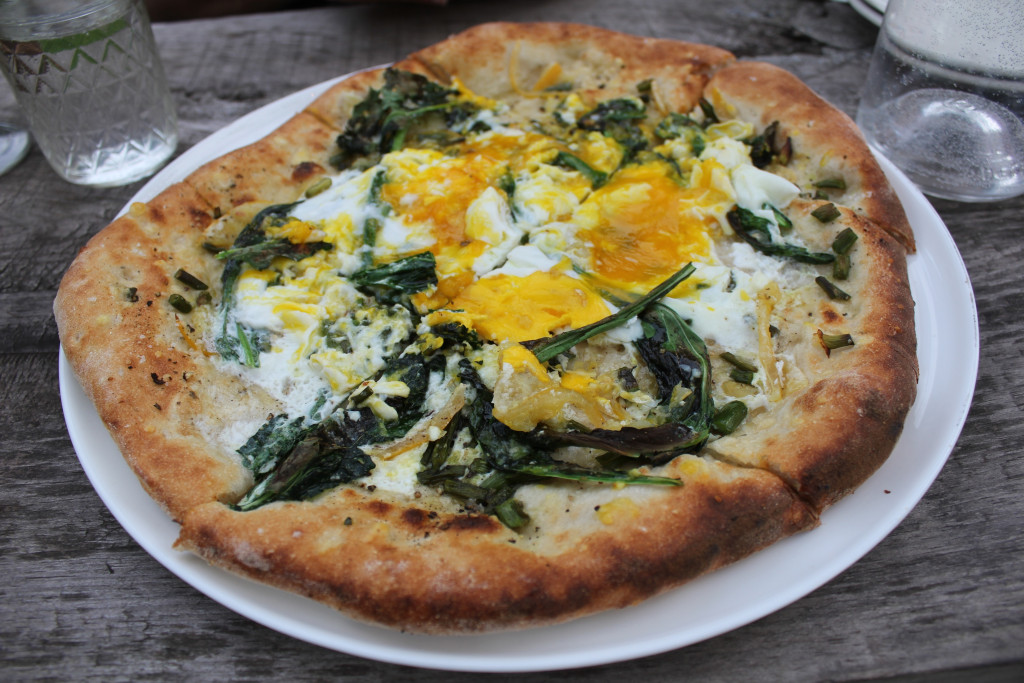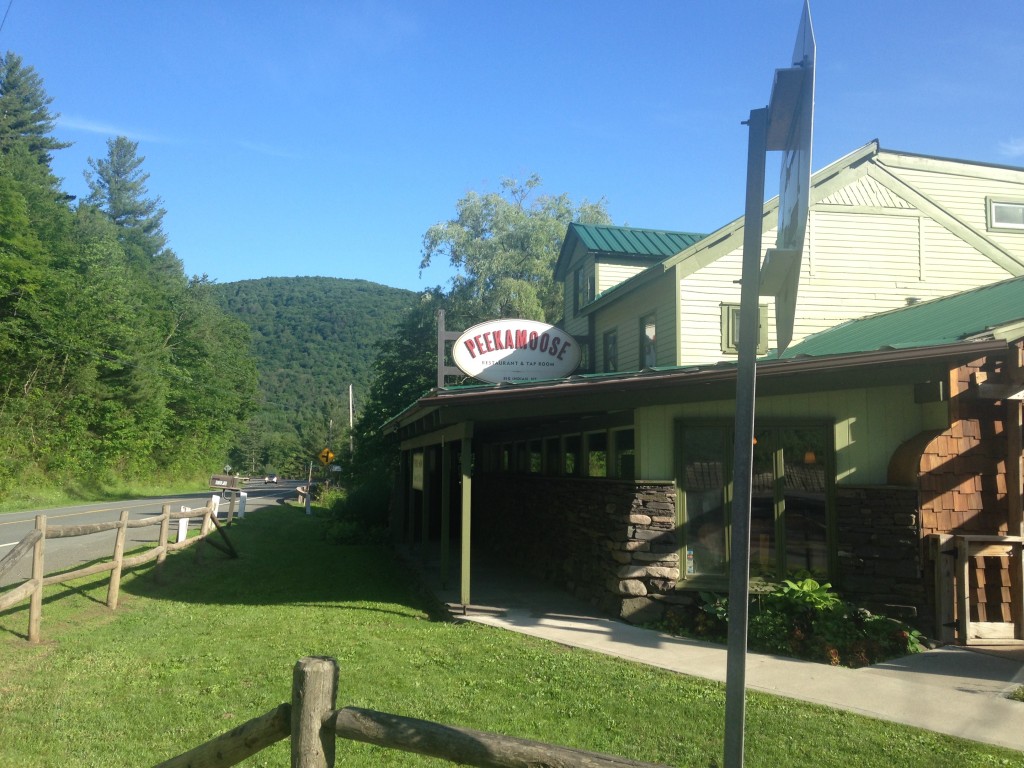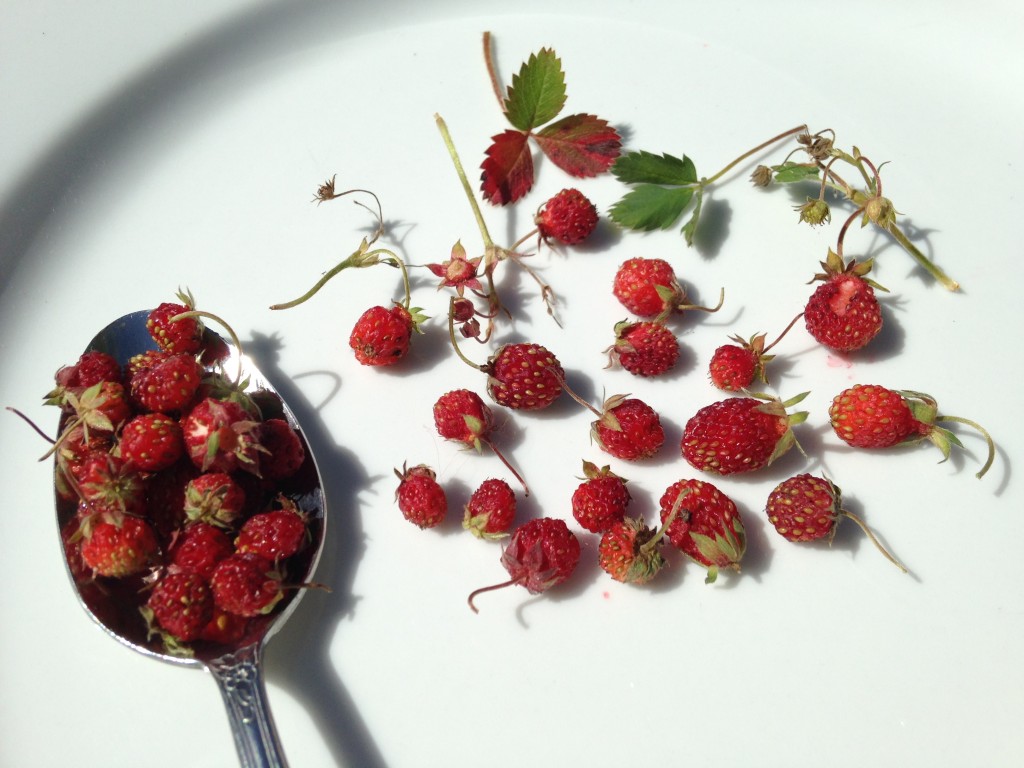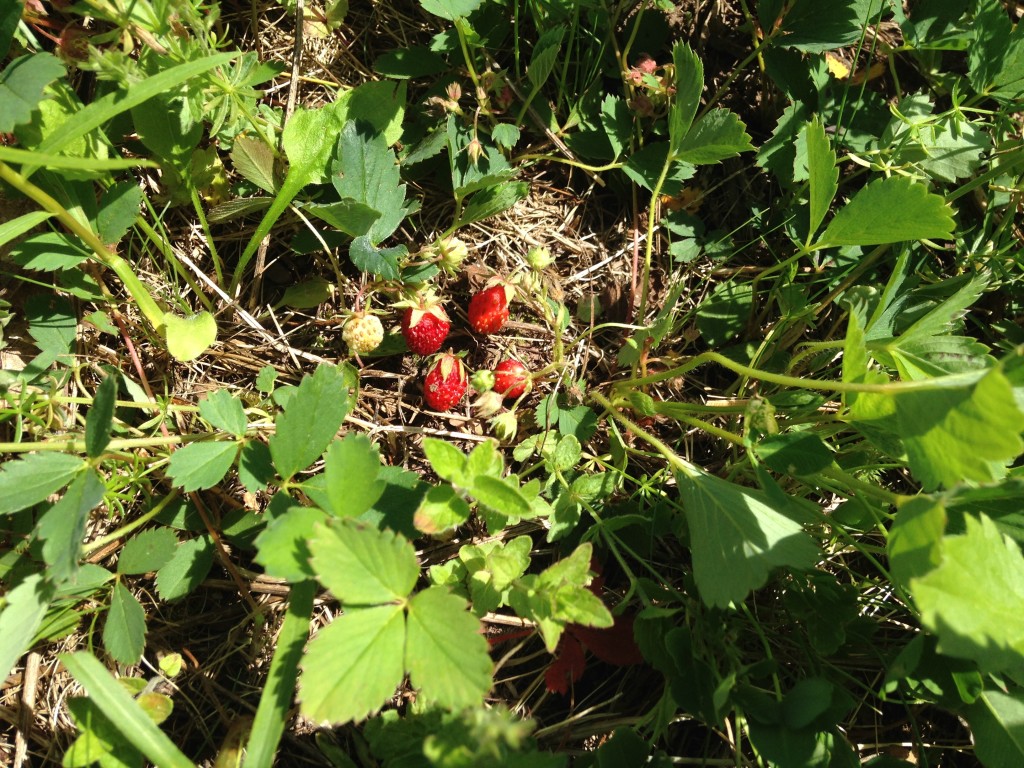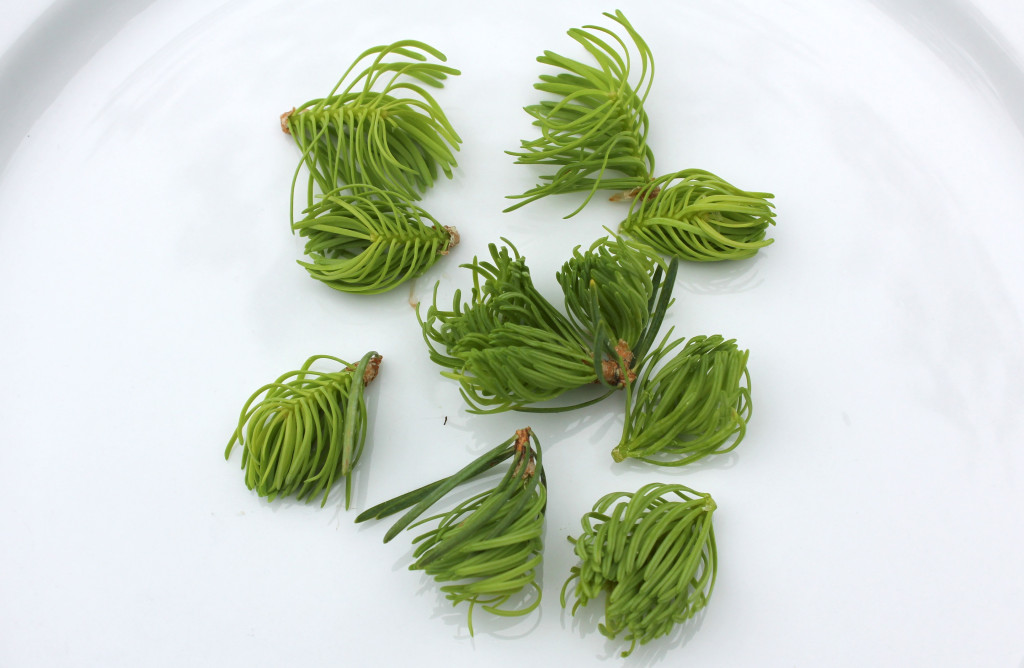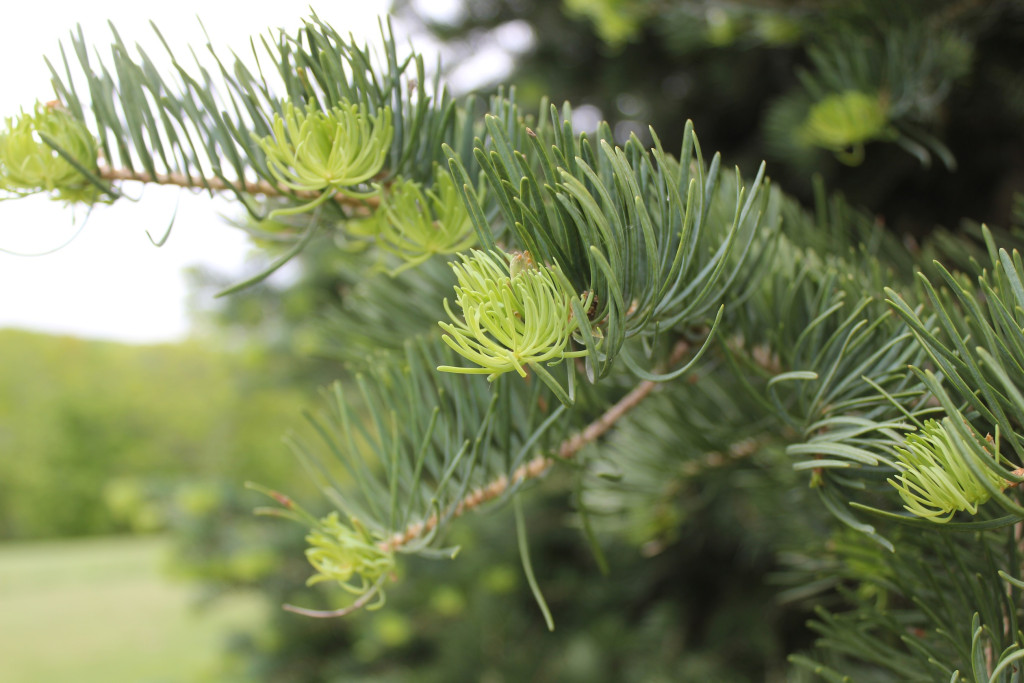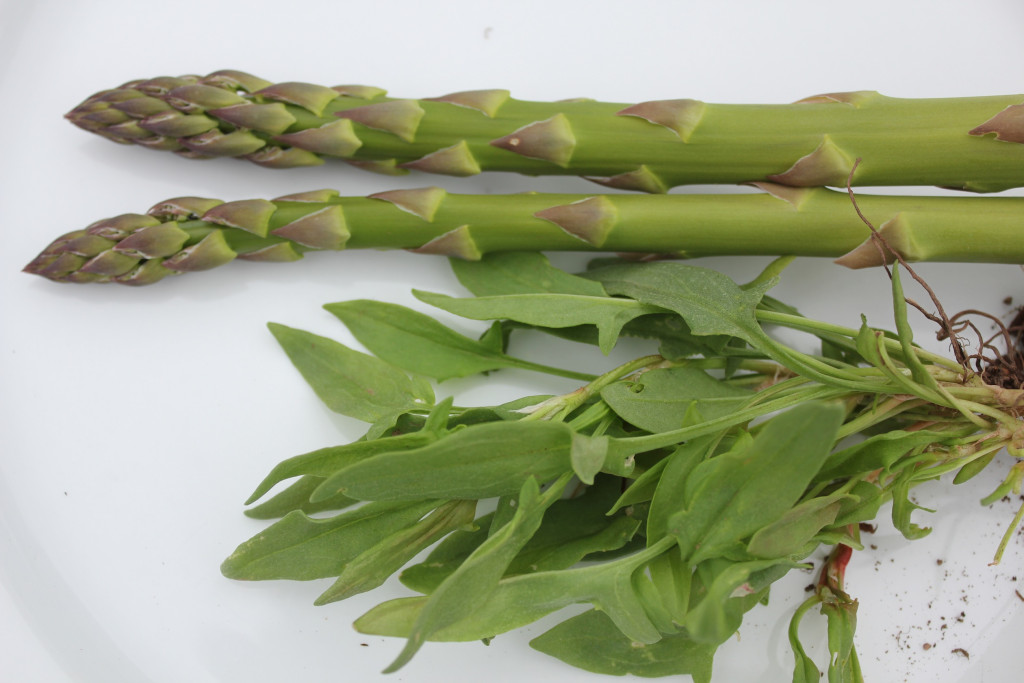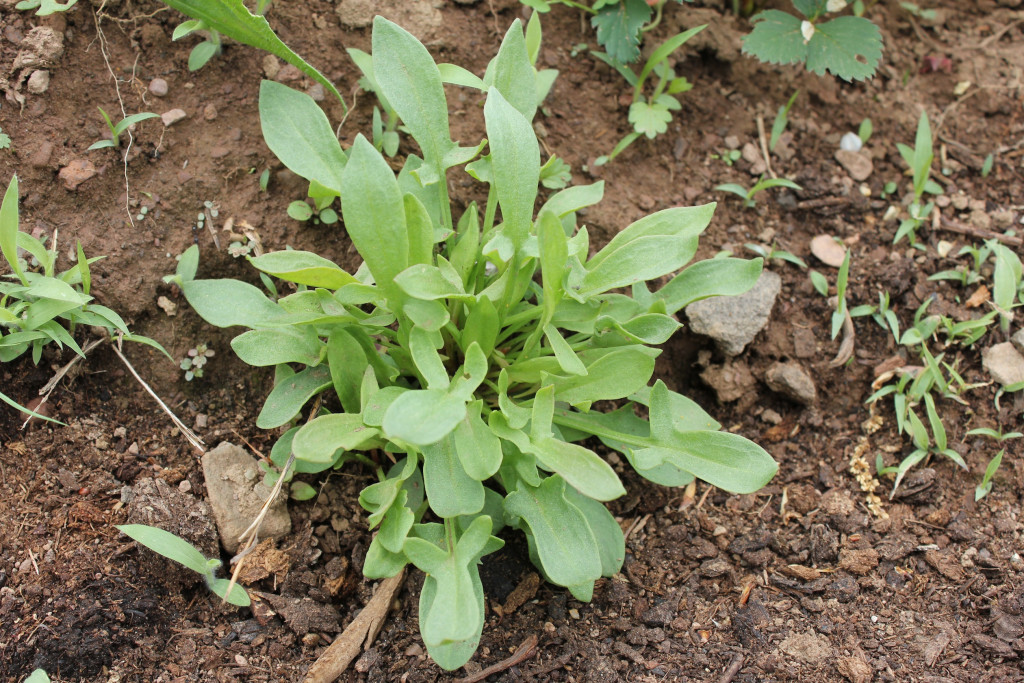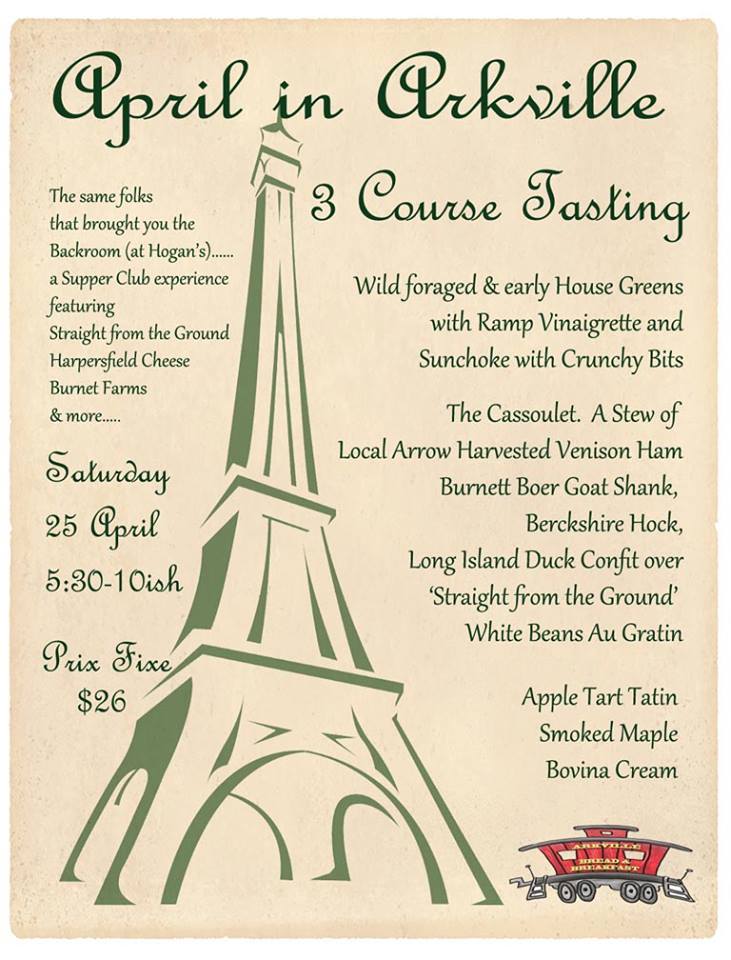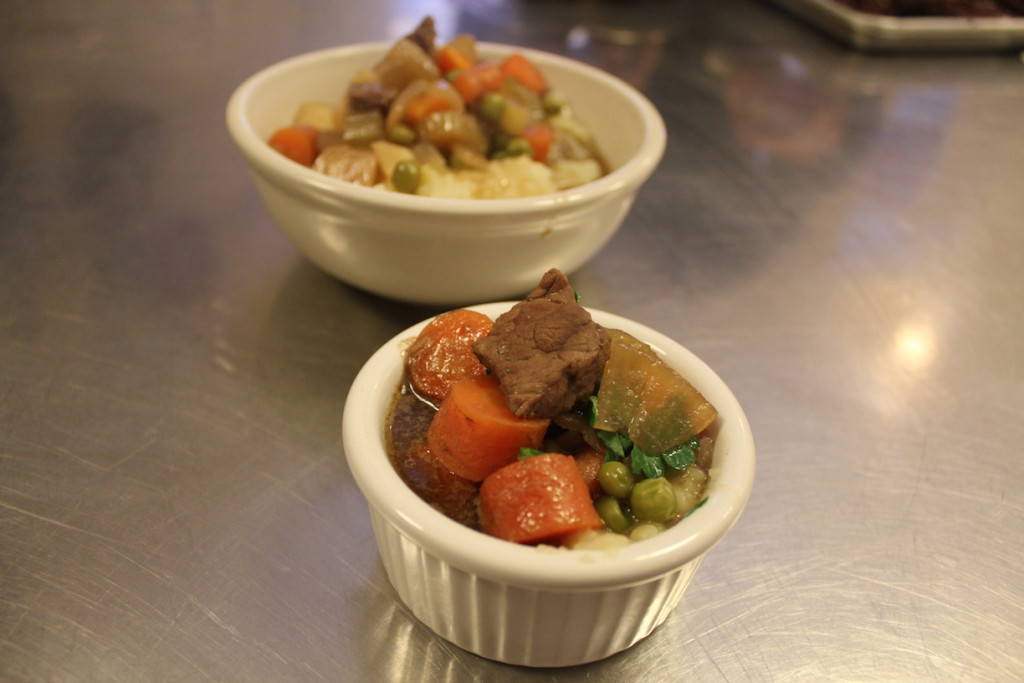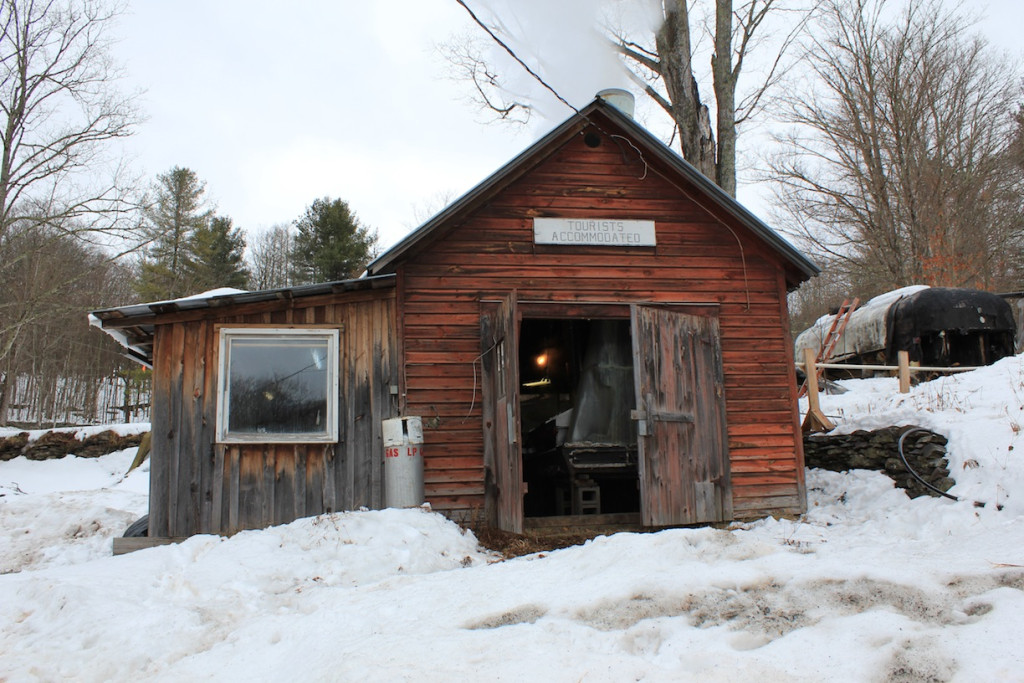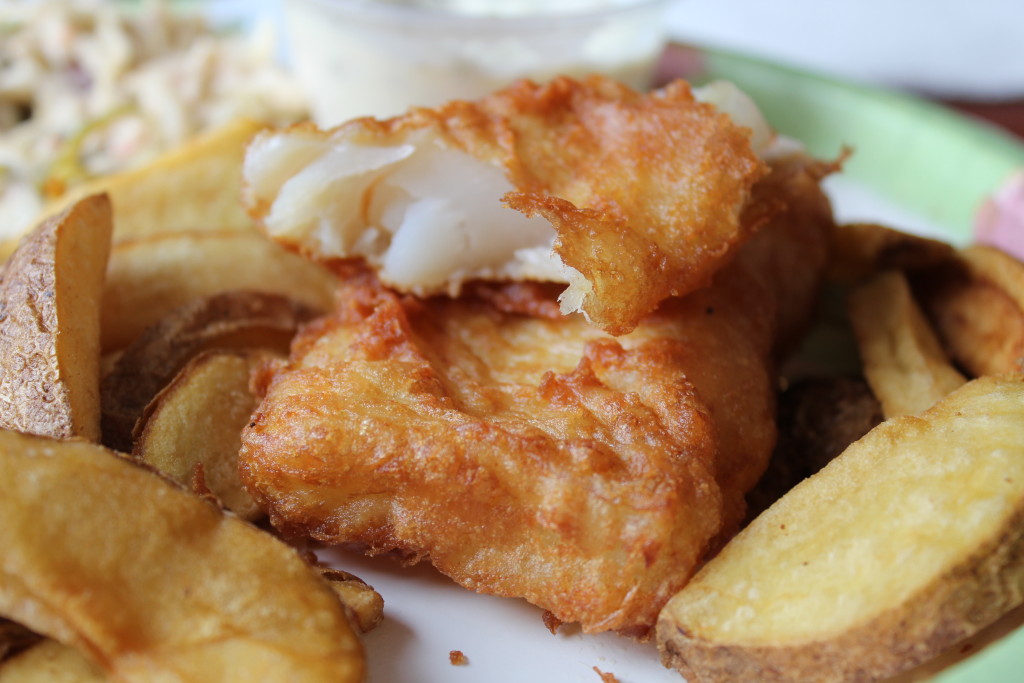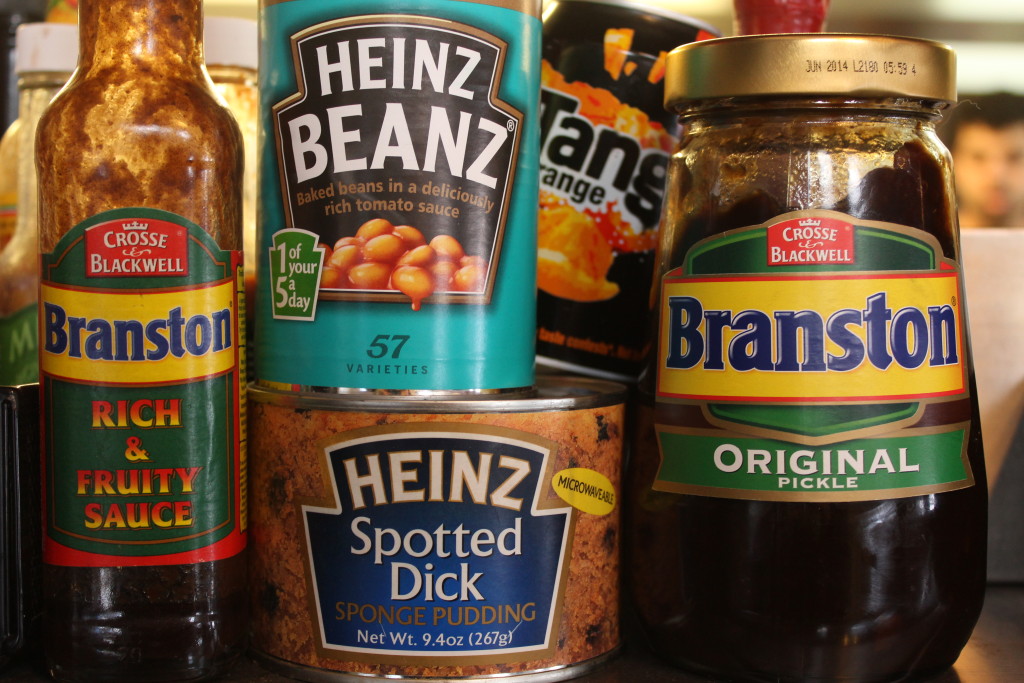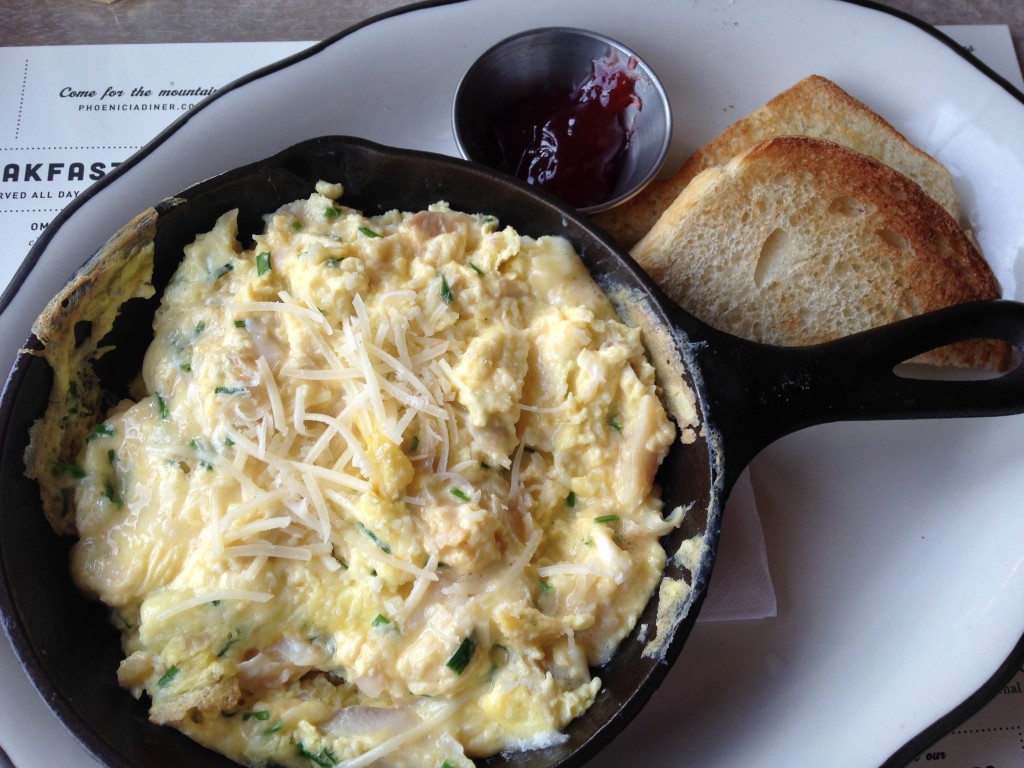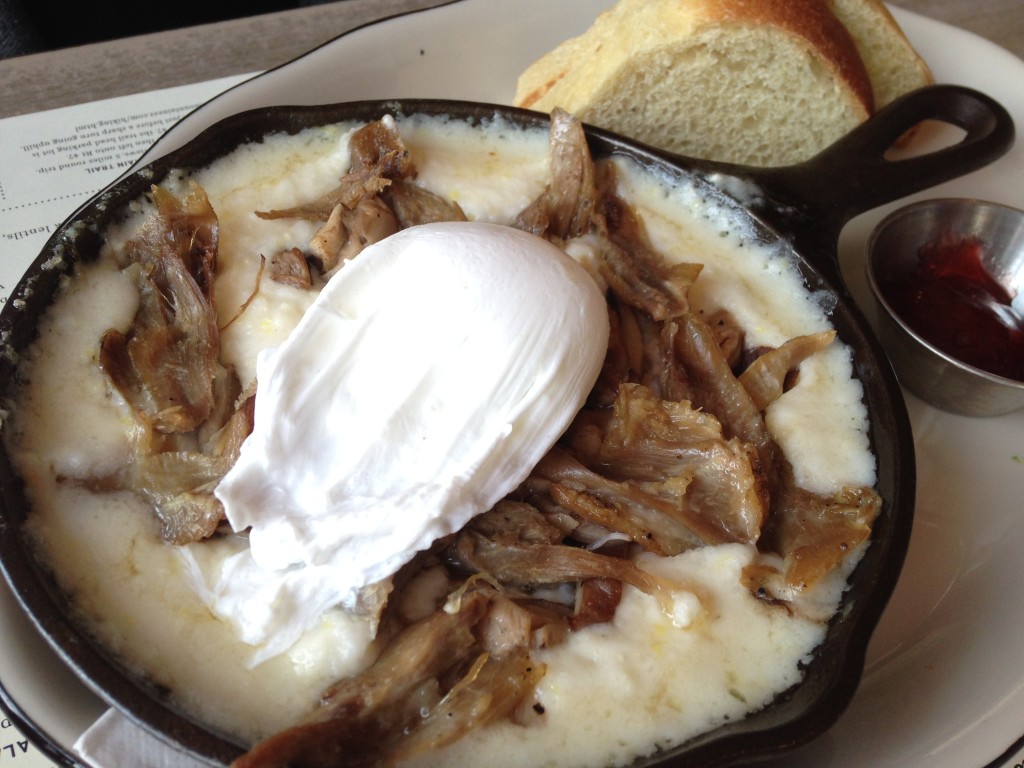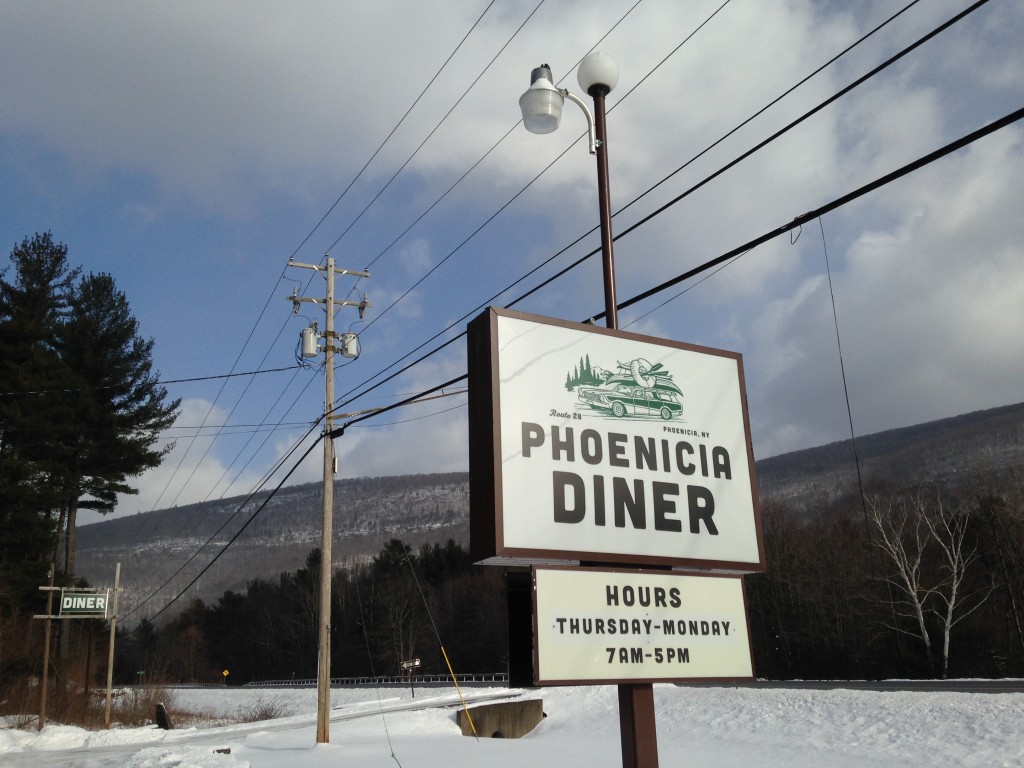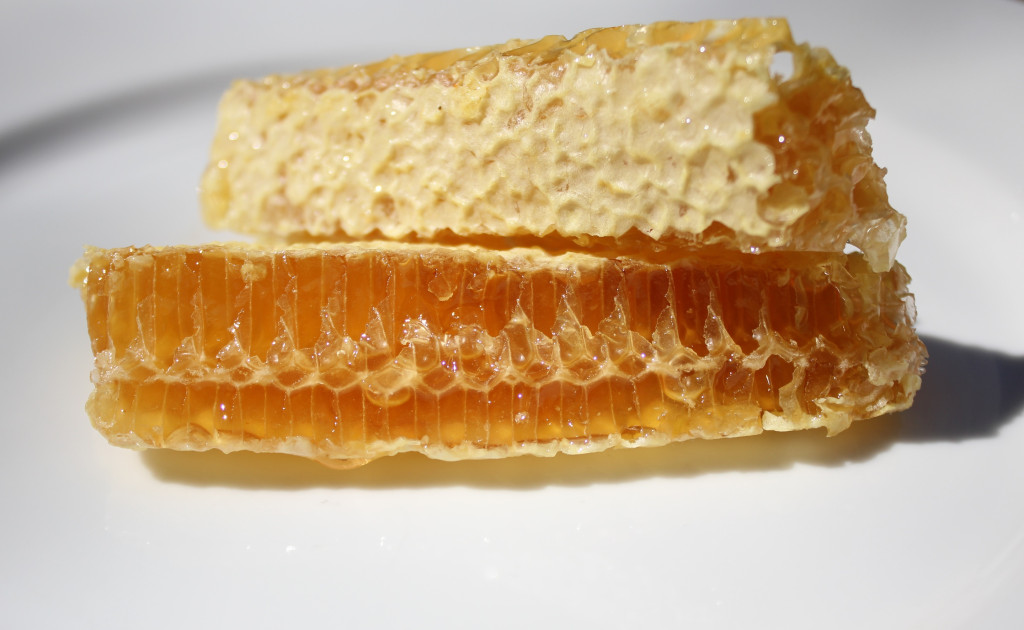Two pals couldn’t have picked a more idyllic evening to attend Table on Ten’s pizza night: an early evening drive through the balmy, bucolic mountains of Roxbury so astonishingly beautiful in the waning light that we had to stop a couple of times to get out of the car and drink in the atmosphere. (“What’s that? Sheep. Let’s stop. Hey Ewe!”) Hay, barns, lush undulating ridges, rail trails, stone walls and bridges over roaring creeks: a gasp of admiration at every turn. A quick jaunt past the restaurant into the hamlet of Bloomville, New York, revealed a picturesque rural scene of tractors, antiques and a white-sided two hundred year old church atop a meadow.
Category Archives: Food
Date Night: Peekamoose
After we closed on our mountain homestead (“sign here, here and here, here, here and here and sign here, here and here… initial here, here and here…”) we wondered aloud where we should go to celebrate and without a moment’s hesitation, our realtor swung away from her conversation with our lawyer to respond: Peekamoose. That was eight years ago and there really wasn’t anything like it then and there really isn’t anything like it now. When we first went to Peekamoose I wanted to just hand the keys back to the bank and move in. The country farmhouse atmosphere is so cozy and relaxing and the food is phenomenal, end of story. The chef’s freshly made doughnuts feel like they could fly away if you don’t hold them down with a generous dollop of whipped cream. I could go on, and I will.
Farm to Belly: Wild Strawberries
In season now, are wild strawberries. That’s a teaspoon, so they’re tiny, but delicious. Look for the serrated-edged leaves and if the grass is low, just run your hands over it and you’ll reveal the berries lying against the ground. Notice that the tiny ones have just as many seeds. Don’t worry if you tread a patch into the ground. You should leave some behind to proliferate in the same place next year.
Wild Edibles: Spruce Tips
I am told by my pal, Laura Silverman, that spruce tips are ready to go. They are the brilliant green shoots that unfold from growths at the ends of the spruce spindles in May. They are much a much brighter green than the needles on the spindle and stand out in stark contrast to the tree itself. Snip the green shoots off and eat raw; they are packed with chlorophyll and Vitamin C. The aroma of only one of these little shoots is sensational. Literally spruce up a living room, pocket, bag or underwear drawer. They freeze well, so you can get your Vitamin C in the winter too. You can make tea, use in soups and salads. You can also crush them and make a pesto like you can with the garlic mustard. Recipes will be forthcoming over the weekend.
Farm to Belly: Asparagus & Sheep Sorrel
Straight out of the ground and into the belly: a powerful organic, raw, vegan lunch and you don’t even need a plate much less a table. The tomatoes may have been endangered by last night’s frost, but the sheep sorrel which grows in the asparagus bed is a hardy little plant. Sheep sorrel is an edible weed that has the texture of spinach with the tasty tang of lemon, which makes it perfect for soups. It wilts quickly once picked, so it’s best just to eat it raw with some juicy asparagus. Sheep sorrel has an arrowhead leaf and grows in a rosette formation.
A Tasting in Arkville at Jack’s Bread Breakfast
Macarons in the Catskills
Why go down to La Duree and stock up on Macarons when you can get them here in the Catskills and not tell the difference? Coming soon… the divine French almond meringue biscuit.
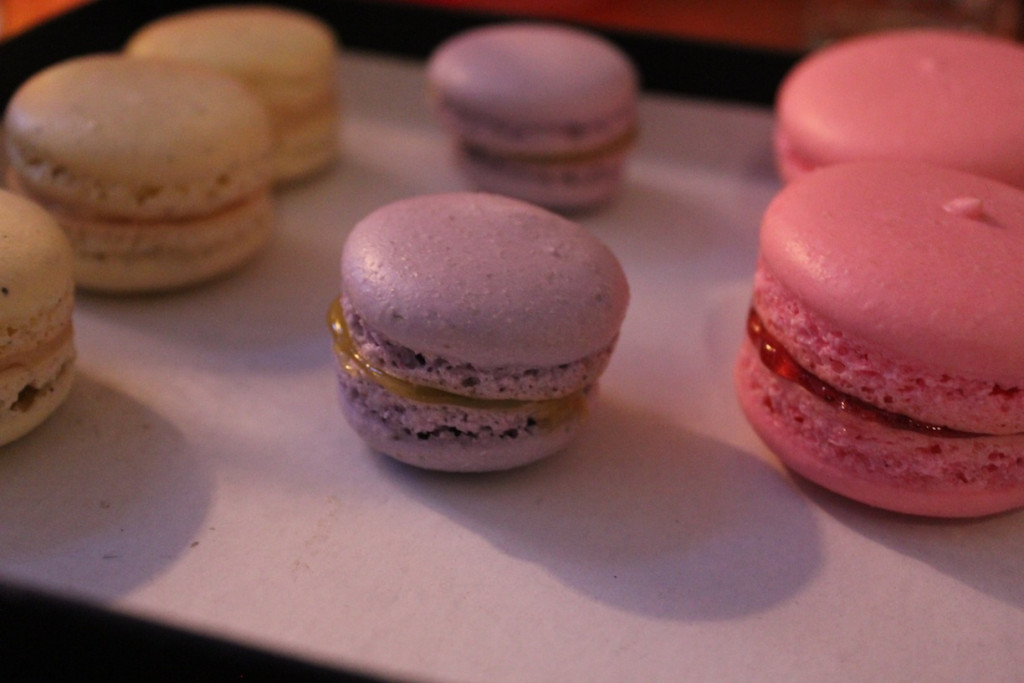
© J.N. Urbanski Melissa Zeligman’s perfect Saturday afternoon experiment
Soup Sundays at Spillian
As I mentioned last week, there was Jazz at Spillian last night, during an event that I dub Soup at the Spills, which was actually a combination of their regular Soup Sundays and their Voices of the Catskills series. In honour of St Patrick’s Day, the Spill’s Culinary Curator Melissa Zeligman made Colcannon, which was delicious. The weather had taken a squally detour down a cold, muddy road by the afternoon yesterday – it had already started snowing again in the morning – so the Irish stew was the perfect wintery feast. By this morning, the sun had come out again in force as if yesterday’s aberrant hail/snow/rain/mud mix had never happened.
The Sugar Shack: Tapping Season
The maples have been tapped and the sap is boiling, old-school style, at the Hubbell Sugar Shack and will be boiling for the next month. This sugar shack runs on a wood-burning furnace and the product, Liquid Gold is sold at Catskill Rentals and Sandford Auto Parts.
Arkville Bread and Breakfast
A good hearty plate of Fish and Chips is to the Catskills what the Bald Eagle is. When you spot one, you freeze in wide-eyed disbelief and fumble clumsily for your camera trying not to divert your gaze from the (menu) for a second. As an English ex-patriot from London, I find that fish and chips is as rare in these mountains as a McVitie’s digestive biscuit and actual Cheddar from Cheddar.*
You’ll find the holy grail of British food at Arkville Bread & Breakfast on Route 28 in Arkville, New York on every other Friday. (Daily menus are posted on the Facebook page.) I remember, as a teenager, fetching the family’s Friday night fish and chips, the smell of lard, salt and vinegar and paying about five British pounds for the feast. Here you’ll pay $8.95 for a portion that comes with coleslaw, chips and tarter sauce, a snip if you realise that you’ll pay $20 in NYC.
Today’s fish was cod; perfectly cooked, thinly battered, flaky and flavourful. Although the thin, crispy batter is the ideal coating, I almost prefer a thicker batter so that I have an excuse to pick out the steaming fish and save some calories, but no, not this time. All of it was eaten with the tangy tarter sauce and, now, off for a long walk I go. Today’s chips were not chips but crisps, made from Maris Pipers, sliced into flat wedges and fried with the skins on: like a drier, less floppy, two-dimensional version of my childhood chips. Also present (pictured at bottom): Sarsons Malt Vinegar, HP Sauce, Heinz Baked Beans, Branston Pickle, Tango and Spotted Dick. Tango & Spotted Dick sounds like a British detective drama brought to you by the BBC, but no, it’s a neon-coloured fizzy drink and a pudding respectively.
Proprietor Jack Zamor says that a lot of British people attend the restaurant, made from an actual train car and situated right next to a railway line, on the days when he has an All-British menu, the next one of which is slated for February 7th, 2015. Next week, Upstate Dispatch will forget all about the homesickness and return for the corned beef brisket on rye.
*If you have some actual Cheddar, please feel free to comment in the reply section.
The Phoenicia Diner Challenge
Last year, Mike Cioffi, owner of The Phoenicia Diner, and I ruminated on the costs of running a restaurant on my radio show The Economy of the Kitchen. Next week, Monday 12th January at 9am, in our second and final show, The Economy of the Diner, we’ll discuss the diner as American icon. The diner also has a rich cinematic history: Pulp Fiction, Twin Peaks, Superman, Back To The Future, Heat, Thelma & Louise, Diner: the list goes on and on. Who can forget Jack Nicholson trying to get an order of wheat toast in Five Easy Pieces or the tipping scene in Reservoir Dogs? Not to mention Meg Ryan’s glorious turn in Katz’s Deli in When Harry Met Sally and the actual movie called Diner, starring Steven Guttenberg directed by Barry Levinson.
As a foreigner, the diner is the ultimate American experience and my first diner visit was Relish in Williamsburg, sadly now slated for demolition. I’ll never forget my first order of biscuits, sausage and gravy and with whom I shared it.
My new challenge is eating my way through the menu at The Phoenicia Diner and I continued today through the skillet section. I tried the Duck & Grits skillet ($11), House Cured Corned Beef Hash skillet ($11) and the Arnold Bennett Skillet ($10). My first taste of American grits (not a British staple) was back in Brooklyn and had been quite vile experience, like eating cold porridge. PD’s grits are creamy with a hint of cheese; their scrambled eggs are the perfect combination of moist and firm. If Chef Mel uses salt in the dishes, you can’t really taste it and this is how it should be. Salt should be the choice of the customer. The Arnold Bennett Skillet ($10) came out on top in this round: locally smoked trout (delicately tasty), parmesan cheese, crème fraîche and scrambled eggs. PD makes its own bread too, which is thick, slightly chewy and tasty. Portions are generous and the eggs are noteworthy – some of the best I’ve eaten in the Catskills – for their vivid orange color. Most ingredients are sourced locally and when they run out, so does the item on the menu for the day. Eat here before you ski, on your way to Belleayre for the hearty nourishment that lasts all day. You can take sides and leftovers to go in compostable containers.
Tune in to The Economy of the Diner on WIOX at 9am on Monday January 12th, 2015.
Saturday Shopping: Local Honey
Honey: a form of address, miracle food, medicinal unguent and mysterious immortal time traveler, having been found in Egyptian tombs intact, it has survived thousands of years. If only those crusty, aged urns of the amber nectar could speak, they could convey untold stories. What honey’s secret to eternal freshness? Lack of moisture, according to the Smithsonian Magazine and a combination of the following factors that produce a rare quality.
First, the aforementioned low moisture content can be survived by only very few bacteria who technically suffocate in the honey. “They just die,” writes Natasha Gelling, quoting Amina Harris, executive director of the Honey and Pollination Center at the Robert Mondavi Institute at University of California. Honey is a sugar and it’s hygroscopic, meaning that it contains very little water in its natural state, but “can readily suck in moisture” if left in an open container.
Second, honey is very acidic with a pH value between 3 and 4.5. “The acid kills whatever wants to grow there,” states Harris. Next:
“Bees are magical,” Harris jokes. But there is certainly a special alchemy that goes into honey. Nectar, the first material collected by bees to make honey, is naturally very high in water–anywhere from 60-80 percent, by Harris’ estimate. But through the process of making honey, the bees play a large part in removing much of this moisture by flapping their wings to literally dry out the nectar. On top of behavior, the chemical makeup of a bee’s stomach also plays a large part in honey’s resilience. Bees have an enzyme in their stomachs called glucose oxidase (PDF). When the bees regurgitate the nectar from their mouths into the combs to make honey, this enzyme mixes with the nectar, breaking it down into two by-products: gluconic acid and hydrogen peroxide. “Then,” Harris explains, “hydrogen peroxide is the next thing that goes into work against all these other bad things that could possibly grow.”
So, with honey being thick enough to put on wounds and containing just enough hydrogen peroxide, it’s the perfect healing unguent. Store your honey in a sealed, airless jar and it will never spoil.
Manuka honey, which is made in New Zealand from the nectar of Leptospermum scoparium, is the basis of Medihoney, which the FDA approved in 2007 for use in treating wounds and skin ulcers.
You may not be surprised about colony collapse disorder if you’re familiar with the large-scale, commercial beekeeping industry. Rather like industrial agriculture in its approach, facilities keep millions of bees in expansive fields that look, ironically, like military graveyards. Commercial “migrant” beekeeping outfits also rent bees out to large-scale agriculture, transporting hundreds of hives on enormous trucks with the bees in them and that’s before you add in pesticides and GM crops. It must be confusing and highly stressful to be a commercial bee.
There’s more urgency than ever to support locally-produced, small-batch honey. The Phoenica Honey Company, based in Phoenicia, New York, buys raw honey wholesale from apiaries in Ulster County and infuses it with natural additives like cinnamon, lavender, star anise, ETC. Proprietor Elissa Jane Mastel buys organic additives where she can and never heats the honey to above 112F and has plans for a thyme and pecan infused honey. The resultant infusions are light, delicate and perfect with tea. Phoenicia Diner and Mama’s Boy Coffee in Phoenicia and Bumble & Hive in Rhinebeck serve Phoenicia Honey Company’s honey.
At Griffins Corners in Fleischmanns, Chase Kruppo is developing Chasing Honey Farm, a new honey haven, on a family plot of five acres. It’s a new long-term sustainable agricultural venture wherein members can “buy-in” on a beehive and either, receive the honey from their bees, the proceeds from the sale of their honey at market, or a combination of both. Chase’s mission is “to create jobs, craft superior honey, and aid a declining bee population”. Watch a video presentation of Chasing Honey Farm here.
“Honeybees pollinate one third of grocery produce and it is vital to the Upstate region to secure the food it produces by supporting its pollinators,” says Chase. “46% of bee hives reporting in New York State were lost last winter due mainly to starvation and excess moisture. Part of the 2015 expansion project of Chasing Honey Farm is the creation of an apple orchard, vineyard, and plantings of white currants, lavender, and mints. Creating summer-blooming food sources for honeybees help the hives build up honey reserves for winter.”
No honey can be certified organic because bees can roam up to five miles away from the hive in every direction, but if we all planted bee-friendly, pesticide-free vegetation, it would help keep local bees healthy.
